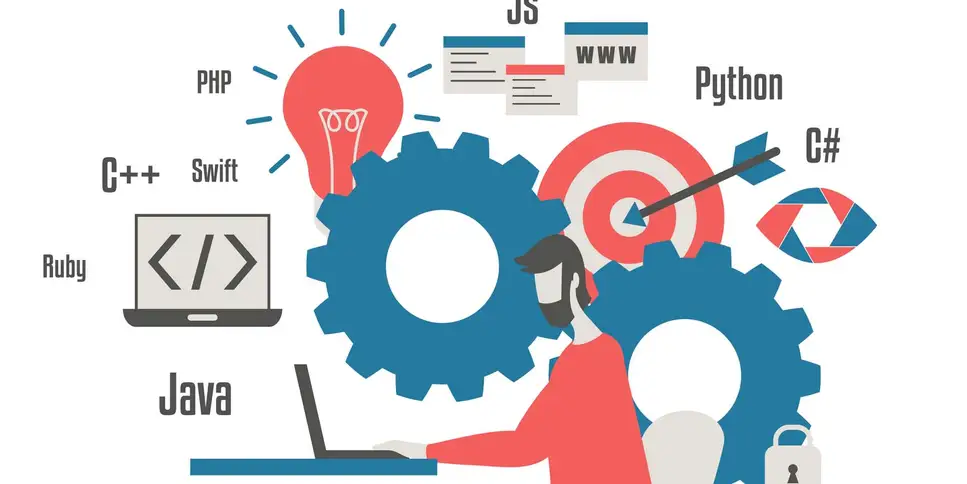Back-end development is the backbone of any web application, ensuring that data is processed, stored, and delivered correctly to users. While front-end development focuses on the visual and interactive aspects of a website, back-end development deals with the server, database, and application logic. In this article, we’ll explore the core concepts of back-end development, the technologies involved, and best practices for building a robust back-end system.
What is Back-End Development?
Back-end development refers to the server-side logic and infrastructure that powers a website or web application. It involves writing code that interacts with the database, handles user authentication, processes data, and responds to requests from the front-end. Without a solid back-end, even the most visually stunning websites wouldn’t be able to function properly.
Core Components of Back-End Development
Several key components are essential to back-end development. Each of these components plays a crucial role in ensuring that the application runs smoothly and efficiently:
1. Server
The server is the central component that handles requests from the front-end and delivers data to users. It processes incoming requests, runs the application logic, and communicates with the database. Common server technologies include Apache, Nginx, and Microsoft IIS.
2. Database
The database stores all the data that the web application needs to function. This includes user information, product details, and other relevant data. Popular databases include MySQL, PostgreSQL, and NoSQL databases like MongoDB.
3. APIs
APIs (Application Programming Interfaces) allow different systems to communicate with each other. In back-end development, APIs enable the front-end and back-end to interact, passing data and commands between the client and server. RESTful APIs and GraphQL are common approaches used to structure these interactions.
Popular Back-End Programming Languages
Back-end development relies on several programming languages that are designed to handle server-side tasks. Here are some of the most popular languages used in back-end development:
1. Node.js (JavaScript)
Node.js is a JavaScript runtime built on Chrome’s V8 engine. It allows developers to use JavaScript for back-end programming, making it possible to use the same language for both the front-end and back-end of a web application. Node.js is known for its scalability and speed, making it a popular choice for building APIs and handling real-time data.
2. Python
Python is a versatile language with a strong emphasis on readability and simplicity. It is widely used in back-end development due to frameworks like Django and Flask, which provide powerful tools for building web applications. Python is also favored for its ease of use in handling data manipulation and integration with machine learning libraries.
3. PHP
PHP is one of the most widely-used languages for back-end development, particularly for content management systems like WordPress. Despite competition from newer languages, PHP continues to be a strong choice for web development thanks to its rich ecosystem, extensive community support, and compatibility with popular databases.
4. Ruby
Ruby, along with the Ruby on Rails framework, has long been a favorite among back-end developers for its simplicity and developer-friendly syntax. It emphasizes convention over configuration, allowing developers to write clean and maintainable code quickly.
Best Practices for Back-End Development
Building a scalable, secure, and efficient back-end requires following best practices that ensure the code is maintainable, optimized, and secure. Here are some key best practices:

1. Use MVC Architecture
MVC (Model-View-Controller) is a design pattern that separates an application into three interconnected components: the model (data), the view (UI), and the controller (logic). This separation of concerns makes the code easier to maintain, test, and scale, especially in larger applications.
2. Prioritize Security
Security is a critical concern in back-end development, especially when dealing with sensitive user data or financial transactions. Best practices include using HTTPS for secure communication, implementing proper authentication and authorization protocols, and sanitizing user inputs to prevent SQL injection and other vulnerabilities.
3. Optimize Database Queries
Efficient database management is crucial for optimizing application performance. Using indexes, avoiding unnecessary queries, and caching frequent queries can significantly improve the speed and scalability of your web application. Tools like Redis or Memcached can help reduce database load by caching data.
Conclusion
Back-end development is the driving force behind web applications, ensuring that data is processed, stored, and delivered efficiently. By using the right technologies, following best practices, and prioritizing security, back-end developers create robust systems that power the modern web. Whether you’re just starting out or looking to refine your skills, mastering back-end development is key to building scalable, reliable applications.


